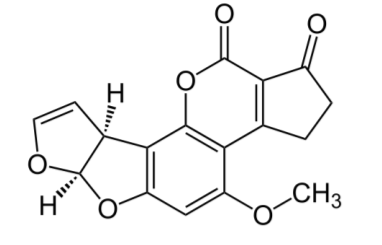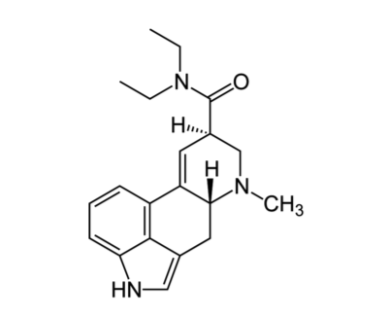
Nature’s Best
 المؤلف:
........
المؤلف:
........
 المصدر:
LibreTexts Project
المصدر:
LibreTexts Project
 الجزء والصفحة:
............
الجزء والصفحة:
............
 2-2-2019
2-2-2019
 1438
1438
Nature’s Best
The idea that nature produces chemicals that are “green” is a fallacy or a myth. The concept of green deserves some clarification at this point. What is green and what isn’t is actually a matter of nature, quantity, human safety, long term effects, and acute toxicity. Green is generally a term associated with a sustainable (renewable) product or non-toxic process whose employment in society has no acute toxicity and a general favorable life cycle analysis. There are a number of documented chemicals in nature that are extremely toxic even at small doses thus invalidating the idea that nature is “green”. For example, aflatoxin B1, shown below in Figure 1.1 , is a toxin produced by Apsergillus flavus and A. parasiticus that is one of the most potent carcinogens known. It is a common contaminant of a variety of foods including peanuts, cottonseed meal, corn, and other grains as well as animal feeds. According to the Food and Agriculture Organization, the worldwide maximum levels of aflatoxin B1 is in the range of 1–20 µg/kg in food, and 5–50 µg/kg in dietary cattle feed.

Figure 1.1 : Shown above is a chemical representation of Aflatoxin B1, one of the most notorious carcinogens available.
Shown in Figure 1.2.3 below is a derivative of lysergic acid. Lysergic acid, also known as D-lysergic acid and (+)-lysergic acid, is a precursor to a diverse array of ergoline alkaloids produced by the ergot fungus and found in the seeds of Turbina corymbosa (ololiuhqui), Argyreia nervosa (Hawaiian Baby Woodrose), and Ipomoea tricolor (morning glories, tlitliltzin). Amides of lysergic acid, lysergamides (see Fig. 3), are widely used as pharmaceuticals and as psychedelic drugs (LSD). Lysergic acid received its name from the lysis of various ergot alkaloids.

Figure 1.2 : Shown above is the diethylamide version of lysergic acid.
Again, as already stipulated, nature’s best does not necessarily imply that her products are “green”. Green, by virtue of the product distribution found in nature (e.g. cocaine), can certainly pose serious if not lethal implications for human consumption. We all know that sodium chloride is ubiquitous within nature. It is a common salt that manifests a cubic crystal lattice structure that readily dissolves in water where it is mostly found. Humans consume it in great quantities as a flavorant, seasoning, and preservative. Nevertheless, its mass consumption especially in the US has led to > 65 million people afflicted with high blood pressure while numerous others have all other maladies associated from its overconsumption.
 الاكثر قراءة في الكيمياء الخضراء
الاكثر قراءة في الكيمياء الخضراء
 اخر الاخبار
اخر الاخبار
اخبار العتبة العباسية المقدسة


